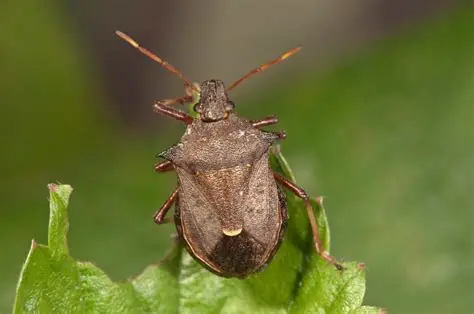100 Earth Day Quotes to Inspire Change and Celebrate Our Planet


Stink bugs can be a frustrating nuisance for homeowners and renters alike, invading spaces and leaving behind unpleasant odors. Their presence often escalates during the fall months when they seek warmth and shelter inside homes. Understanding how to effectively get rid of stink bugs and prevent future infestations is crucial for maintaining a comfortable living environment. This comprehensive guide will explore identification techniques, effective removal methods, and preventive measures to help you combat stink bugs both indoors and outdoors.
Stink bugs, primarily belonging to the family Pentatomidae, are shield-shaped insects that vary in color from green to brown. The most common species in North America is the brown marmorated stink bug (Halyomorpha halys), which can be identified by its mottled brown appearance and white banding on its antennae. These pests are notorious for their pungent odor, which they release as a defense mechanism when threatened.
Stink bugs typically measure about 0.5 to 0.75 inches in length. Key characteristics include:
Signs of an infestation can include:
Stink bugs invade homes primarily in search of warmth and shelter during colder months. They are attracted to light and often enter through small cracks and openings. Their ability to reproduce quickly means that a small initial invasion can lead to a larger infestation if not addressed promptly.
Identifying an infestation early can help in managing the problem effectively. Look for the following indicators:
When it comes to removing stink bugs from your home, there are several effective methods to consider:
One of the simplest ways to remove stink bugs is by vacuuming them up. Use a vacuum cleaner with a bag to contain the odor. Follow these steps:
For example, a homeowner in Ohio reported successfully using this method to clear out a small infestation in their living room. They vacuumed regularly for a week, significantly reducing the number of bugs.
Homemade traps can be an effective way to catch stink bugs. Here’s how to create a simple trap:
For smaller infestations, manual removal can be an effective option:
A resident in a nearby town reported using this method successfully when they found a few stink bugs on their windowsill, managing to clear them out without any lingering smells.
Stink bugs can also pose a threat to garden plants, particularly fruits and vegetables. Managing their presence in the garden involves targeted strategies:
Using row covers or netting can deter stink bugs from reaching your plants. Ensure that:
Encouraging natural predators can help control stink bug populations. Consider:
Preventing stink bugs from entering your home is far more efficient than dealing with an infestation. Implement these actionable strategies:
For those seeking eco-friendly options, several natural methods can help control stink bugs:
Using essential oils can deter stink bugs effectively. Consider using:
Creating an insecticidal soap can help manage stink bugs without harsh chemicals:
If you find that your efforts to get rid of stink bugs are ineffective or the infestation is severe, it may be time to consult a professional exterminator. Signs that you should seek professional help include:
Professional exterminators have access to specialized tools and methods that can provide a more thorough solution to stubborn infestations.